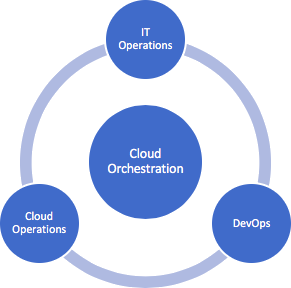First came the trumpets. Then came the violins and flutes, along with the thunder of the drums. But they all started making sense only when the orchestra was created. This is basically the same case with Cloud Orchestration, which is now taking cloud computing to a whole new level.
Just like classical music lovers can no longer live without the orchestra, Cloud Orchestration is becoming a necessity. Simply put, the growing complexity of cloud technology is making it hard to create seamless and sustainable ecosystems due to various compatibility and synchronization issues.
Did You Know?
As per a recent IDC research, more than 65% of enterprises will use multiple cloud services and platforms by the year 2020.
Cloud Orchestration: The Evolution of Cloud Automation
Cloud technology is evolving at an astonishing pace. More and more companies depend on multiple cloud providers to maintain their workflows and that dependency is slowly mirroring the early use of multiple physical servers, despite the huge advances made in cloud automation.


This heterogeneity makes manageability and coherence a major challenge in cloud operations. The solution to this challenge lies in implementing a solution that can manage these interconnections and interactions among cloud connected units. This solution is essentially called Cloud Orchestration.
Cloud orchestration platforms are typically used to provision, deploy or start servers. They also enable the acquiring and assigning of storage capacity, while helping manage networking and create VMs. All of this is basically based on three pillars: service, workload and resource orchestration.
An orchestration platform can also integrate permission checks for security and compliance. Simply put, these platforms’ centralized nature enables administrators to review and optimize automation scripts, something that eventually maximizes efficiency, improves security and increases revenue.
5 Top Benefits of Cloud Orchestration
There are many reasons why Cloud Orchestration is taking the world by storm. This popular approach can provide several benefits such as:
- Cost Reduction and Scaling – By coordinating the processes, it reduces the amount of IT resources required and the number of system administrators. Physical resources are coordinated with virtual resources, enabling rapid scaling just when it is needed.
- Efficiency – Cloud Orchestration simplifies management of repetitive tasks via automation. It merges availability, scaling, failure recovery, dependency management, and numerous other tasks and attributes into a single process that can tremendously reduce errors and issues.
- DevOps Support – Cloud Orchestration supports self-service portals, which allows you to choose from standard offerings. This facilitates innovation and efficiency for DevOps teams. You also get interconnections to heterogeneous devices, which also provides more resiliency.
- Enhanced Visibility – Cloud Orchestration provides visibility into resources and processes that simple automation lacks. For example, a business can regulate capacity via preset resource templates for application deployment and track all resource requests seamlessly in real-time.
- Improved Security – Orchestration software helps IT organizations standardize templates and enforce security practices. It is also a good defense against VM sprawl — providing visibility into, and control over, cloud resources and, implicitly, costs.
Did You Know?
As per Oracle, over 80% of all enterprise workloads will move
to the cloud by the end of 2019.
Automated DevOps: Making Cloud Orchestration Possible
While Cloud Orchestration is a great concept, it cannot possibly be achieved without proper automation of your DevOps. This is because DevOps alone doesn’t always provide the necessary capabilities to keep up with the ever-changing scenarios that constantly arise in today’s dynamic setups.


Cloud Orchestration: Connecting the dots in the modern ecosystem.
Proper automation prior to Cloud Orchestration helps with:
- Accuracy – automating configurations and the software deployment has become the key highlight of DevOps practice. DevOps practice is heavily dependent on automation today in order to make deliveries over a period of a few hours and make frequent and repeatable deliveries across platforms, all with zero errors.
- Visibility – With more and more organizations today opting for different cloud services in tandem, it’s important to pick an automation solution that not only helps monitor everything from one centralized dashboard, but also one that allows you to detect, pinpoint and solve problems fast.
- Budget Friendly – DevOps is heavily dependent on automation today to make deliveries over a period of a few hours and make frequent deliveries across platforms, all with zero errors. This is extremely crucial for saving time, money and resources, while also enhancing your brand reliability.
In short, automation helps with speed, accuracy, consistency, reliability and allows you to increase the number of deliveries. Automation in DevOps encapsulates everything right from building and deployment, all the way to monitoring each and every aspect of the production for optimized results.
The database can become challenging for DevOps and automation, as it holds persistent data which cannot be replaced, unlike compiled application code.
It is much more susceptible to configuration drifts, and when organizations ignore the technical challenges specific to databases and neglect the use of database specific release automation tools, broken deployments can occur. This is a Pandora’s box you really don’t want to open.
As a result, database automation processes had been found to significantly lag behind application processes, and pose a risk when it comes to non repeatable manual processes, or automation without database specific risk management.
Just like a maestro conducts an orchestra, using an automated solution along with Cloud Orchestration can help you create a seamless ecosystem.
Find out how to automate your database releases now. Enjoy the combined benefits of Cloud Orchestration along with seamless release automation for a seamless development cycle. Request your demo now.





